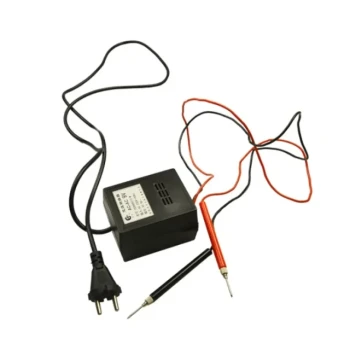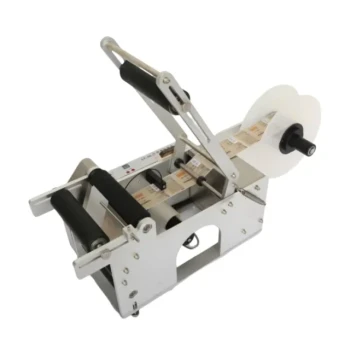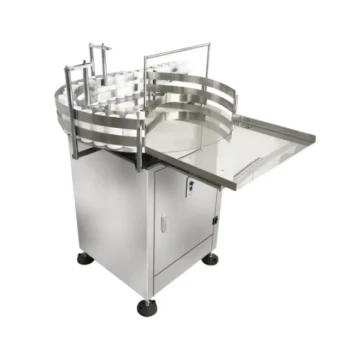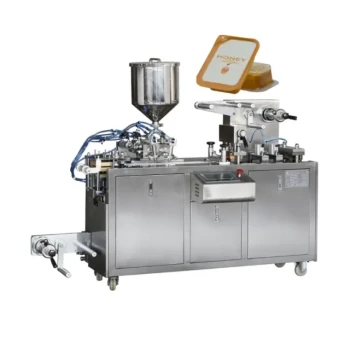The best container for melting beeswax is one that allows for gentle, indirect heating, such as a dedicated crockpot or a heat-resistant pot used in a double boiler setup. The specific container is less important than the method, which must avoid direct heat to prevent scorching the wax or creating a fire hazard.
The core challenge in melting beeswax isn't finding a special container, but rather controlling the temperature. The fundamental rule is to always use an indirect heat source to melt the wax slowly and safely, which preserves its quality and prevents dangerous accidents.
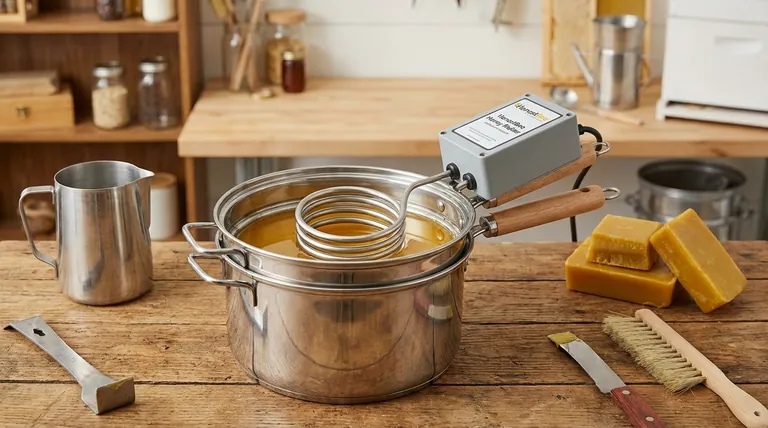
The Core Principle: Why Indirect Heat is Essential
Melting beeswax requires a gentle and controlled approach. Applying high, direct heat from a stove burner is the most common mistake and can lead to significant problems.
Preventing Fire Hazards
Beeswax is a flammable material. Placing a pot of wax directly on a burner can quickly raise its temperature past its flash point, creating a serious risk of fire. Indirect heat keeps the temperature low and manageable.
Preserving Wax Quality
Beeswax has a narrow ideal temperature range. It melts between 143-151°F (61-66°C) but can become discolored and lose its distinct, pleasant aroma if it exceeds 170°F (77°C).
Avoiding Scorching
Direct heat creates hot spots at the bottom of a pan. These hot spots will scorch the wax that is in direct contact, turning it dark brown and ruining its natural color and scent for your projects.
Recommended Methods and Containers
The best methods all rely on the principle of indirect heating. Your choice of container will depend on the method you select.
The Double Boiler Method
This is the most common and accessible technique for melting beeswax. You place a smaller, heat-resistant container holding the wax inside a larger pot with a few inches of simmering water.
The container for the wax should be something you can dedicate to wax projects, as it will be very difficult to clean completely. A stainless steel pouring pitcher, an old saucepan, or a tin can are all excellent choices.
The Dedicated Crockpot Method
Using a slow cooker or crockpot is an effective and largely hands-off method, especially for larger batches. The crockpot's ceramic insert serves as the container.
Its low, consistent heat is perfect for gently melting wax over a few hours. It is highly recommended to use a dedicated crockpot for this purpose to avoid contaminating cookware with wax residue.
The Solar Oven Method
For a passive and sustainable approach, a solar oven is an excellent choice. This method uses the sun's energy to melt the wax very slowly and gently.
The container can be any dark-colored, heat-resistant pot or jar placed inside the solar oven. This is the safest method of all, though it is dependent on climate and weather.
Critical Safety Protocols to Follow
Regardless of the method you choose, safety must be your primary concern. Beeswax can cause severe burns when hot and poses a fire risk if handled improperly.
Never Use Direct Heat
This is the most important rule. Never place a pot of beeswax directly on an electric or gas stove burner.
Dedicate Your Equipment
Beeswax is notoriously difficult to clean from pots, spoons, and other utensils. Designate a specific set of tools for your wax-working to save yourself time and protect your kitchenware.
Constant Supervision is Non-Negotiable
Never leave melting beeswax unattended. With a double boiler, you must also ensure the water in the bottom pot does not completely evaporate.
Making the Right Choice for Your Goal
Your ideal method depends on your project scale, available equipment, and how hands-on you want to be.
- If you are a beginner or melting small batches: The double boiler method is the most practical and cost-effective way to start.
- If you need to process larger quantities of wax: A dedicated crockpot offers a reliable, low-effort solution for melting bigger blocks.
- If your priority is safety and sustainability: A solar oven provides the gentlest and most passive approach, perfect for off-grid or eco-conscious projects.
By prioritizing indirect heat and careful supervision, you can safely melt beeswax while preserving its natural quality for any project.
Summary Table:
| Method | Best Container | Key Benefit |
|---|---|---|
| Double Boiler | Dedicated stainless steel pitcher or old saucepan | Precise temperature control, accessible |
| Dedicated Crockpot | Crockpot's ceramic insert | Hands-off, ideal for large batches |
| Solar Oven | Dark-colored, heat-resistant pot or jar | Safest, most sustainable method |
Ready to scale up your beekeeping operation? HONESTBEE supplies commercial apiaries and beekeeping equipment distributors with high-quality, wholesale-focused supplies and equipment. From large-capacity wax melters to durable stainless steel containers, we provide the reliable tools you need for efficient, safe, and large-scale production. Contact our wholesale experts today to discuss your specific needs and get a quote!
Visual Guide
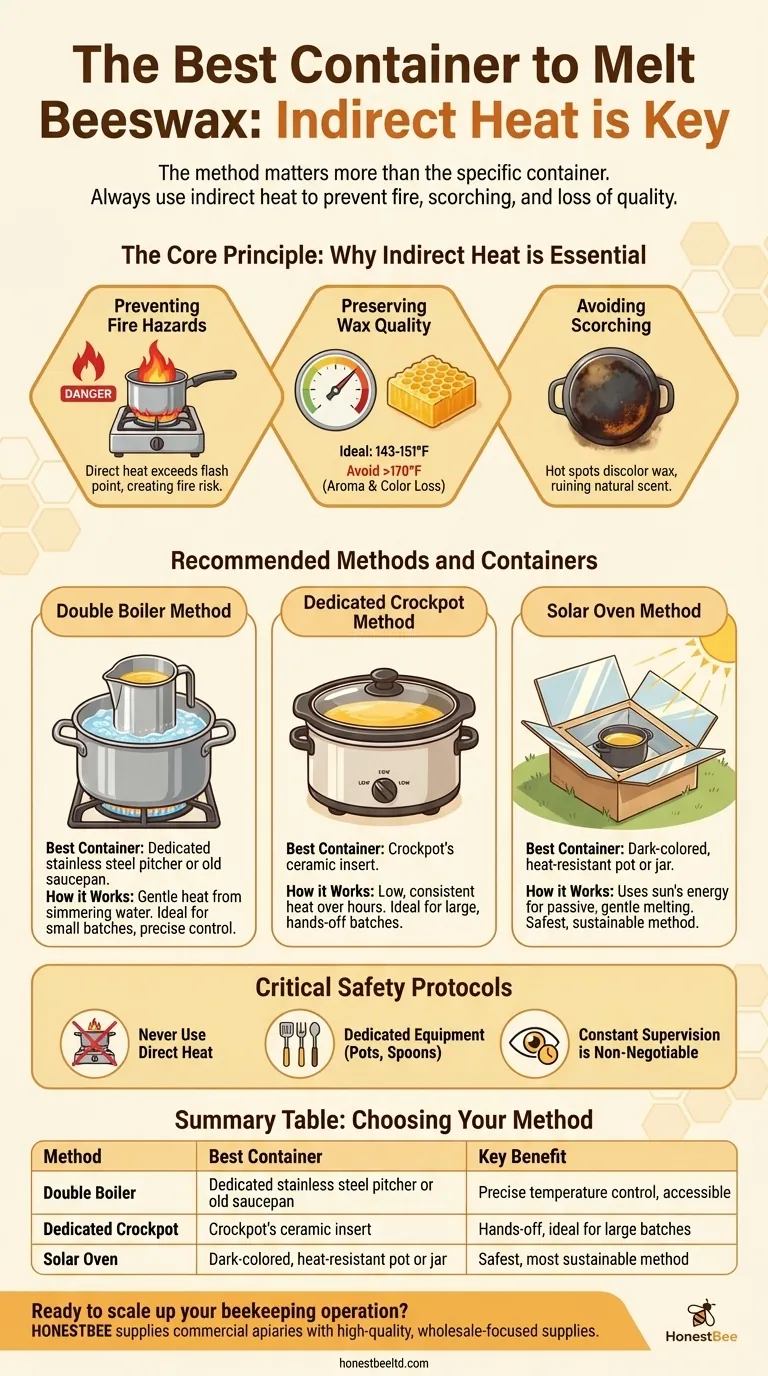
Related Products
- Professional Thermostatic Conical Honey Melter
- Honey Concentrating Vacuum Heating Thickening Machine Dehumidifier for Honey
- HONESTBEE Advanced Ergonomic Stainless Steel Hive Tool for Beekeeping
- High Quality Honey Dehumidifier Dryer Thickening Machine for Beekeeping
- Professional Dual-End Stainless Steel Hive Tool for Beekeeping
People Also Ask
- How does the Bee Blanket help maintain honey quality? Preserve Enzymes with Gentle Hive-Mimicking Heat
- What equipment is commonly used for heating and processing honey? Essential Tools for Every Beekeeper
- At what temperature does honey flow? Preserve Quality with the Perfect 95°F Sweet Spot
- Why is heating honey sometimes necessary? The Essential Guide to Processing & Quality
- What are the negative effects of overheating honey? Preserve Your Honey's Natural Quality





